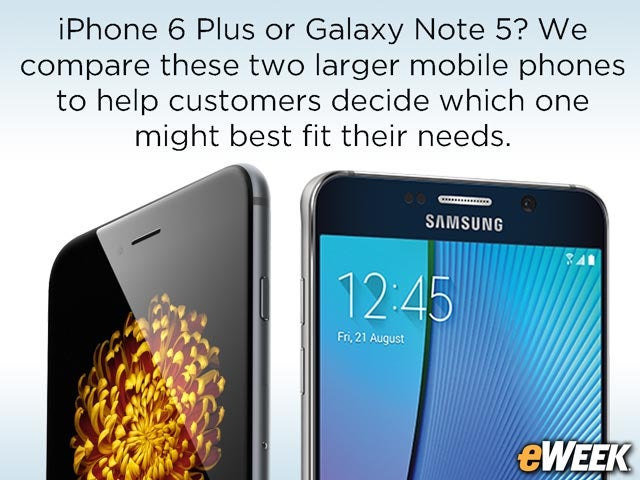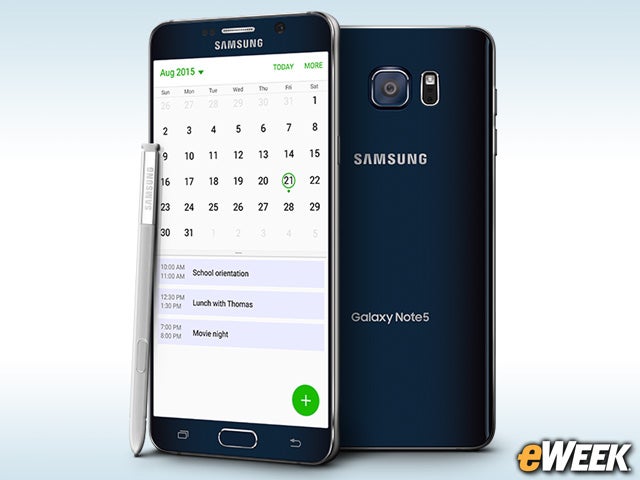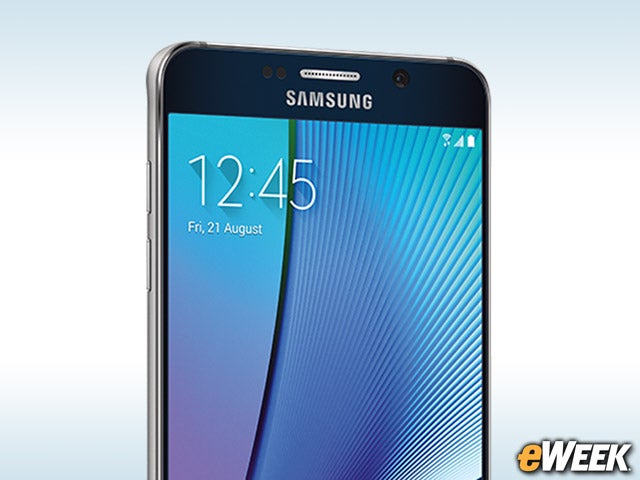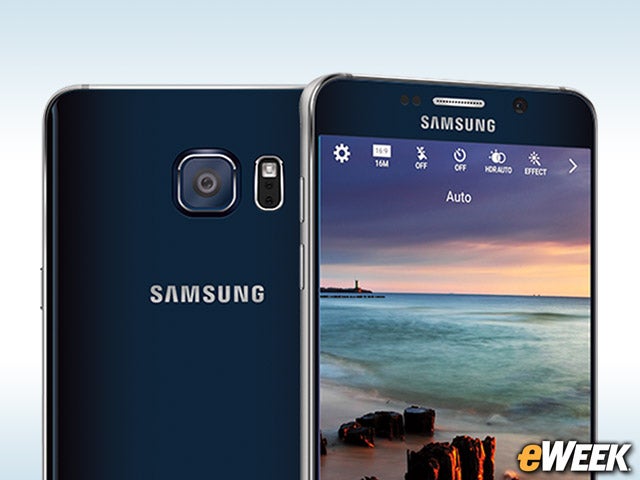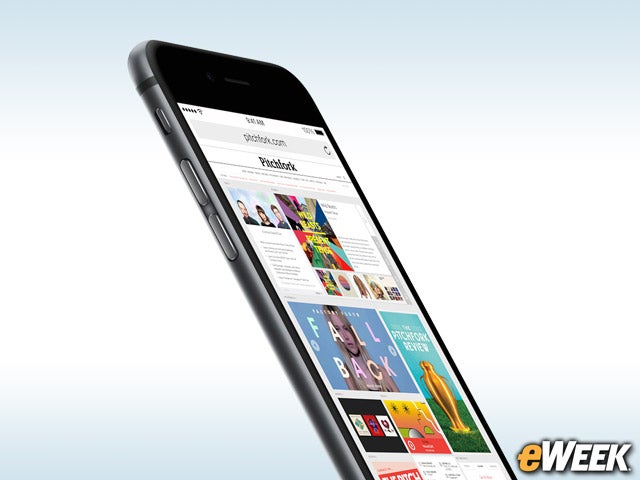eWEEK content and product recommendations are editorially independent. We may make money when you click on links to our partners. Learn More.
1How Samsung Galaxy Note 5 Stacks Up Against iPhone 6 Plus
2Compare the Thin, Lightweight Designs
What’s clear when looking at both the Galaxy Note 5 and the iPhone 6 Plus is that the devices have a similar design. Both Apple and Samsung designed their products to be thin and lightweight and, although large, still feel comfortable in a hand. Apple’s iPhone 6 Plus has a bit more of a contoured design than the Galaxy Note 5, but they both have the look of a premium design—a key selling point in the higher end of the smartphone market.
3How Important Is That Advanced S Pen?
Those who prefer to tap around a display with their fingers would likely want to choose the iPhone 6 Plus. The Galaxy Note 5 is designed for the company’s “advanced” S Pen stylus that not only handles simple tapping and swiping, but also includes support for handwriting on the screen. Some folks prefer the Galaxy Note because of its S Pen, and this could give the Galaxy Note 5 an edge.
4Each Delivers a Totally Different Software Experience
The software experiences built into the iPhone 6 Plus and Galaxy Note 5 couldn’t be any different. The iPhone 6 Plus runs the standard build of iOS 8. The Galaxy Note 5 comes with Google’s Android platform, including all of Google’s apps and some of Samsung’s own programs. So, customers will need to choose whether they want the Android experience or the iOS experience.
5Both Handsets Provide Plenty of Screen Real Estate
Screen sizes in the higher end of the marketplace range from 5 inches on up to 6 inches. Both Apple and Samsung are offering products at the top of that range. The iPhone 6 Plus comes with a 5.5-inch screen, while the Galaxy Note 5 has a 5.7-inch display. Both options offer enough screen real estate to comfortably read books, play games, and run many different applications for work or play. Image 4: Please use this image:
6Do you Prefer Apple Pay or Samsung Pay
Customers who buy the Galaxy Note 5 will have full support for Samsung’s mobile-payment platform, Samsung Pay. The iPhone 6 Plus offers support for Apple Pay. Customers who are heavily invested in Apple’s services and already have a Pay account may want to choose the iPhone 6 Plus. Those willing to try out something new, however, could go for Samsung Pay. Ultimately, it might be best to see how Samsung Pay fares in its early days and determine whether it’s a safe solution. So far, Apple Pay has held up well.
7Compare Battery Life and Charging Features
The major difference between the battery in the Galaxy Note 5 and Apple’s iPhone 6 Plus is that the former allows for wireless charging. Samsung says that its battery will recharge quickly, and there’s a feature built-in, called Ultra Power Saving Mode, that extends text and talk time by turning off other system resources. The Apple iPhone currently doesn’t provide such, but the company says its battery can last up to 24 hours of talk time on 3G and 80 hours of constant audio playback. In other words, both batteries are sufficient for most users.
8Both Devices Pack Processing Power
Both models deliver plenty of processing power. The iPhone 6 Plus comes with Apple’s A8 chip and M8 motion coprocessor to add extended capabilities to apps. The A8 chip runs at 1.4GHz, according to various product testers. The Galaxy Note 5, meanwhile, boasts an Octa-Core processor that has two quad-core components with clock speeds of 2.1GHz and 1.5GHz, respectively. Both devices handle even the most resource-intensive apps with ease.
9Both Devices Provide Similar Sensors
Don’t expect to find much difference between the iPhone 6 Plus and the Galaxy Note 5 when it comes to the sensors they offer. Both devices have accelerometers and gyroscopes to measure movement and come with geo-magnetic components. Most notably, the handsets have fingerprint sensors for additional security.
10Samsung Grabs an Edge on Camera Resolution
Looking at the cameras, one could argue that Samsung’s Galaxy Note 5 takes the nod. The handset has a 16-megapixel rear-facing camera and a 5-megapixel front-facing lens. Samsung says that the front-facing camera is “selfie-ready,” thanks to its support for wide-angle shots. The iPhone 6 Plus has an 8-megapixel rear-facing camera, and its front-facing “FaceTime HD” camera comes in at 1.2 megapixels.
11Both Models Provide Security, Device Management Features
Ultimately, the IT side is wondering about security and the value it’ll derive from these devices. However, it’s hard to find a winner when they’re compared against each other. Apple has built out a strong mobile device management platform that enhances corporate security and governance. Best of all, it works with iPhone 6 Plus. The Galaxy Note 5, meanwhile, supports Samsung’s Knox security platform, a major virtue in the eyes of IT professionals seeking better security. The iPhone 6 Plus and Galaxy Note 5 deliver strong security and device management controls that IT managers demand.
